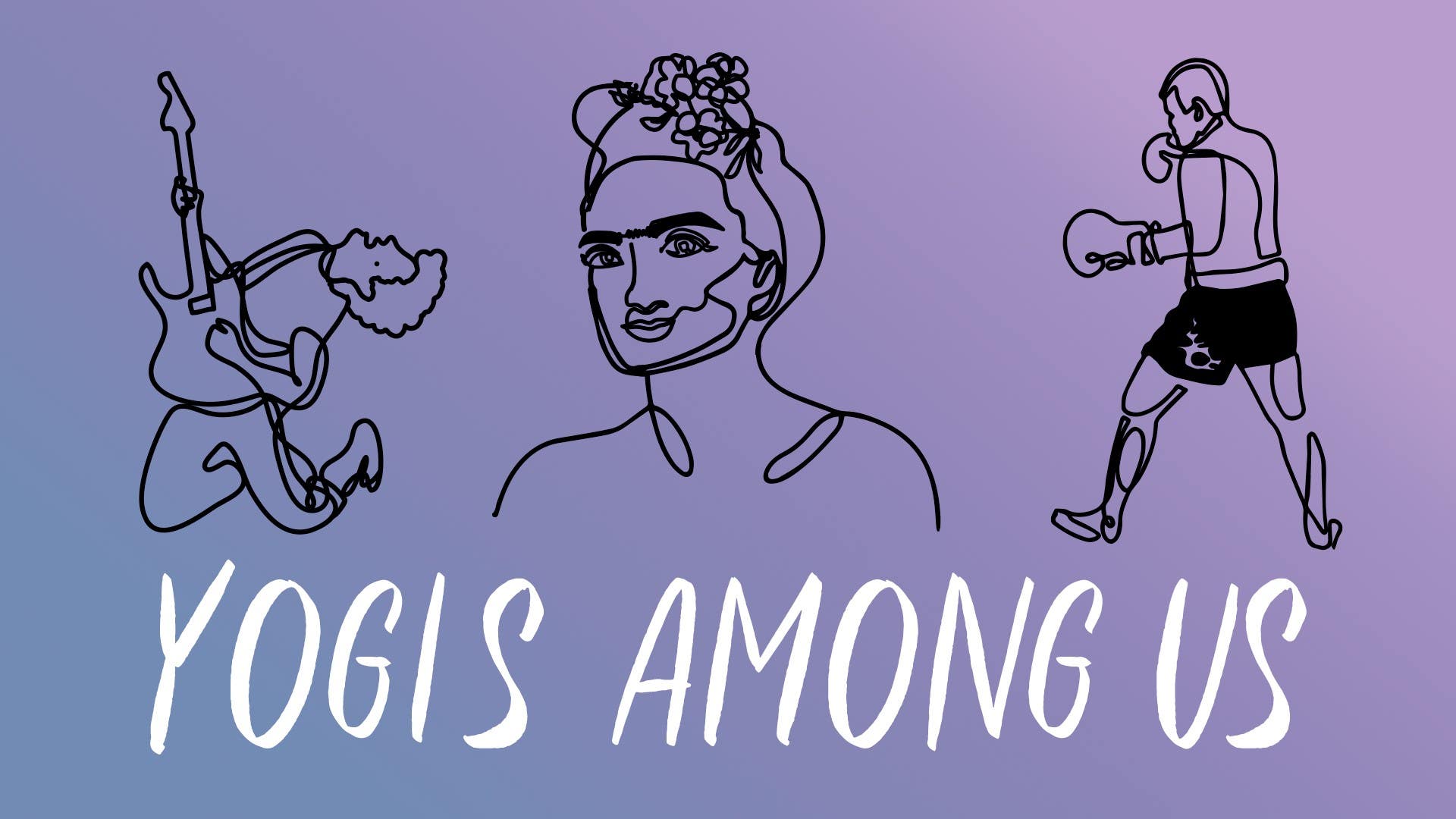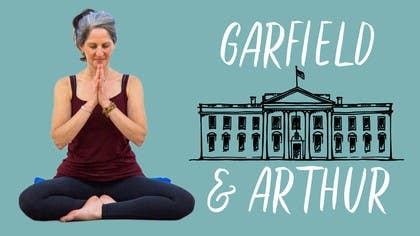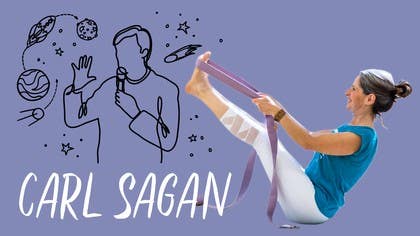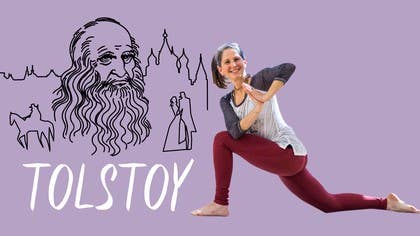Description
About This Video
Transcript
Read Full Transcript
Chapter 1
Talk
This episode is not about brownies, but I'm going to use brownies as an analogy. If you ever made brownies and you're combining, stirring the batter, and you take a little taste and it's really good, and then you think, I want another taste, and then you take another taste, and then maybe I'll just get a bigger spoon and just scoop it, and this will be my last one, like, okay, it's so good, do I really even want to bake these? Because this batter is so satisfying, and you realize you've eaten like two brownies worth of the batter, so you make the brownies, and then they come out of the oven, you let them cool, maybe there are other people in your home who haven't seen them yet, and then you're like, I kind of want to like just put some away for myself to make sure that I get my fair share of brownies. So if you don't like brownies, swap in the thing that you want all for yourself. We want the stuff.
We want the pleasure. We want the satisfaction. We want, as human beings, it's a natural tendency of who we are in this world. We're a greedy bunch. So transition to flashback, 1880, it's the Republican National Convention, the Republicans at that time were sort of what we associate with the Democrats today.
It doesn't really matter, it's a political party. They're having their convention, and they can't decide who to nominate for the campaign to elect the next president. So it turns into a brokered convention, which the back door dealings, and someone is just chosen. The party boss at that time in 1880 was a man named Roscoe Conkling. He was a senator from New York, and he ran the show.
You did what Roscoe told you to do. Roscoe decided that James Garfield should be the nominee, and that Chester Arthur should be his vice presidential nominee. So this was a problem for some people, because Chester Arthur had never held elective office before. The only job he had ever held of significance in the political realm was as collector of the customs in New York, which was a job where basically you greased your pockets from people coming in and owing tariffs, and then you said, oops, no, that's going to be a couple hundred dollars more. Thank you very much.
But Chester Arthur was not all greed. In fact, he had been an attorney previously, and he represented Elizabeth Jennings, who was the first woman to integrate the New York City streetcars in 1854. And Arthur's family were well-known prominent abolitionists. So back to the brokered convention, 1880, Roscoe Conkling is the boss. He nominates, or he says that they're going to nominate Garfield as the presidential nominee and Chester Arthur as the vice presidential nominee.
They go on to win the election. And Garfield, in fact, has it on his agenda that he has an issue with the spoils system. So here we get into this greed theme. The spoils system at the time meant that everybody who ever did you a political favor or gave you any contribution for your campaign would be rewarded for sure with a job in your administration. Now this is not, it's not not done today, but it's not done anywhere near to the degree it was done in the late 1880s.
The president had the power to nominate not just the cabinet secretaries, but the entire department. So imagine that it's not just the secretary of state that changes with the new president, but it's the whole state department in every one of the departments. This was a big turmoil, a big turnover every time we had a new president. And people who took these jobs didn't necessarily and often didn't have any experience doing the jobs. Again, not, not happening today, but not happening the way it was happening.
So this is upsetting to Roscoe Conklin because that's not what he put these two men in office to do. He ordered Garfield to do certain things and Garfield refused. Along comes a young man named Charles Guiteau. This is six months into James Garfield's term as president. Charles Guiteau is a disgruntled office seeker.
He has not been rewarded with political favors. He hauls off with a gun, shoots Garfield dead and proclaims, I am a stalwart and Arthur shall be president because Arthur used to grease his pockets at the customs. So Guiteau assumed that he would grease, re-grease pockets as president. Chester Arthur had none of it. And so he was the president who signed into law the Civil Service Reform Act of 1883 to abolish this practice.
So greed be gone, at least a little bit from government. You don't often think of yogis as a greedy bunch, but if we're being honest with ourselves, we are a human bunch and that by definition suggests that we could incline ourselves toward greed. I want to eat that brownie batter. The yoga sutras give us a tool to work with this tendency toward greed. In the Yamas and Niyamas, two of the eight limbs on the path of yoga.
The Yamas recommend the ways to deal with these tendencies in the world. And the one relevant here is aparigraha in Sanskrit. Non greediness, non hoarding, tempering this inclination to want and want and want more and more and more and more. Working with this practice of aparigraha in terms of asana could mean that we take a posture and we go as deep into it as we possibly can and then we back it up a notch and then we reevaluate and we see. And the chances are that it might feel better in the end if we don't take the whole thing and we just take enough.
And especially if we're working with the body that isn't really meant necessarily to go whole hog into the big back bender all the way down into the deep forward bend. But a body that's calling for us to have some tempering, some mitigation of the possibilities of movement so that we come back to center. So we'll explore this in a standing series.
Chapter 2
Practice
So make your way up to stand. Put the feet nice and squarely on the mat, spread the toes wide, feel the base of the foot making firm contact with the earth.
Reach your arms out wide, reach, reach, reach through each set of fingertips and reach so far out that you feel like someone's trying to pull your arms out of their sockets. And it probably doesn't feel all that awesome. So back it up a notch, soften, draw into the shoulder socket with the arm bones, maybe don't straighten out the elbow joint entirely, give a little softness without losing the vibrancy and the fullness of the gesture and observe how that feels. Now take the arms up and initially push and reach and push and reach and be a little greedy about it and notice there's probably some tension rising in this act. Soften back in, step it back just a notch and observe.
And then release hands to the heart. So this is how we'll go through the practice, going as far as you can go and lingering there only for enough time to realize that you don't have to go as far as you can go. You don't have to eat as many brownies as you could. Backing it up a notch, tempering that tendency to be greedy, to want it all. So come to the front of your mat, bring your hands to your hips, inhale, lift the heart, lean back just a touch, not as far as you possibly could.
That doesn't feel good in my lower back, I don't know about yours. Lift up tall through the heart and exhale, fold forward. So there's no point in forcing the hamstrings to do what they're not ready to do. Release the arms, put your hands on something. If reaching the floor means that you sacrifice the length and traction in your spine, then it's not a great idea.
Bring your hands to a comfortable resting spot and breathe, inhale, bring your hands back together at the heart and we'll do what I call almost sun salutes. So we'll move through the familiar pattern of the vinyasa, of the flow without forcing deeply into any of the poses. So inhale, reach up, reach tall, reach deliberately, reach intentionally, but not in a hard greedy manner. Exhale, float down without forcing the fold. Inhale softly rise up halfway, exhale, float back down.
Exhale, step one foot back, exhale, step the other foot back, push back to dog pose, and then as soon as you get there, back away from it for a moment, inhale, exhale, round the spine, shift your shoulders forward until they're just almost right above your wrists. Pause there, put a back bend in it. Keep the hips high, move the heart forward and high up in front of you, and then push the floor away from you into almost down dog, and as soon as you think you've reached your limit back away from it, round the spine, shift forward, pause, put a gentle back bend in it, lift the hips, lift the heart, push the floor away, almost dog pose, come forward. One more time, round the spine, put a back bend in it, push back, and then step to the front of the mat. Inhale, reach up, exhale, center, and we'll do that again.
Inhale, reach up, almost as high as you can go. Inhale, fold forward, almost as low as possible, inhale, lift up halfway. As soon as you think you've reached your limit, back away from that limit, go down again. Step a foot back, step the other foot back, almost plank pose, and then turn it into almost dog. Don't go as far as you can go, go 90% of how much you can go, and then round the spine, shift forward.
Because when you think you're about to go to plank and then put a little back bend in it, lift the heart, push the floor away, almost dog, round forward. You can play with a little bend in the knees. Push back to almost dog, round, come forward, shoulders over the wrists when you're lingering there for a moment. Lift the heart a little back bend, push back, and then step forward. Inhale, reach almost all the way, exhale, hands together, gently, lightly in front of the heart.
One more round, inhale, reach up tall, exhale, fold. Turning the edges. Step back, push back almost all the way into your not deepest dog, round the spine forward, shift shoulders over the wrists, take a little back bend, push the floor away, softly flowing from bit to bit, repeat, round, come forward, inhale, little back bend, exhale, push. One more time, round forward, add a little back bend, push the floor away, almost dog, and then step forward, inhale, reach up tall, exhale, hands together at the heart, rest your arms by your sides. Stand in the center of your mat and make a plan to come back down to sit.
Make whatever support you like for your seated posture, any comfortable cross-legged position. So we'll explore this almost-ness quality to the postures in seated twists. And we'll make them very simple and very delicate. So inhale, lengthen the spine, exhale, a simple turn to one side. So one hand goes behind you, the other hand goes on the opposite knee, and rather than forcing all the way into the deepest coil that you can find, let the belly turn forward a little bit.
Hug neutral, just a touch, and then let the heart move in opposition to that, but not too far. Take a few breaths while you're here. And then simply return to center, pause here, inhale. And on the exhale, a simple turn to the other side. One hand behind, other hand on the opposite knee.
The belly is still hugging forward, and the heart is seeking the side. And then release, turn back to center. Forward folds are a breeding ground for greedy folk. So we'll examine this prospect, this principle of a parigraha in a seated forward fold. So with your legs straight out on the mat, pull the flesh out from under the sitting bones, wriggle forward onto the backs of your thighs, make your feet perky, ten toes pointing up the ceiling, but not pointing so hard that there's tension in the feet when there's no need for tension in the feet.
And bring your hands to the floor right beside your hips. Press down into the floor, inhale, lift up, and exhale. As you start to inch forward, consider that you're moving the belly toward your thighs and not your head towards your knees. So in this way, we keep the spine neutral. We keep the fold long and free, and then you can bring your hands forward.
Go as far, as far as you can, and then back away just a notch and breathe. And then come back up, return to a comfortable cross-legged seat. We can explore the principle of a parigraha with breath awareness. The idea is that we take the inhale, and then we allow the exhale, and at the bottom of the exhale, we just pause and linger in the empty space. When you're ready, begin.
And exhale, and then wait. When it's time, invite the breath back in. Consider a gentle linger, inhale back again, exhale, pause in the emptiness. Three more breaths. And take a few natural breaths, and bring your hands together at your heart.
Contemplate the rest of your day. Can you move through it with grace and with a lack of greed, with an understanding that we have enough? May all beings be happy. May all beings be free from suffering. May all beings be at peace.
Thank you.
Yogis Among Us
Comments

You need to be a subscriber to post a comment.
Please Log In or Create an Account to start your free trial.













